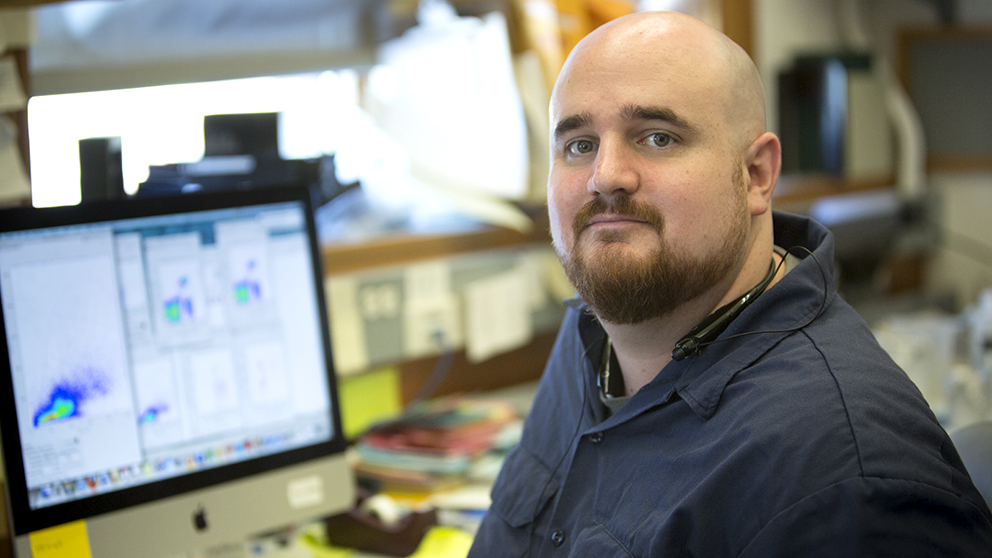
Jeremy Racine, Ph.D., develops new mouse model to further explore the connection between Type 1 diabetes and neuritis.
Sparking connection
Nearly nine million people worldwide have been diagnosed with Type 1 diabetes (T1D), a chronic organ-specific autoimmune disease occurring when the pancreas is damaged by a dysregulated immune response and subsequently produces little to no insulin. As part of the Serreze Lab, Research Scientist Jeremy Racine, Ph.D., explores the genetic factors contributing to autoimmune diseases, including T1D. He recently has developed a new mouse model to improve understanding of the cellular and genetic mechanisms driving both autoimmune diabetes and autoimmune neuritis (a condition caused by nerve inflammation), which can lead to more serious states of neuropathy (chronic nerve damage, dysfunction or degeneration).
Time for an upgrade
The current standard model used to study human T1D is the non-obese diabetic (NOD) mouse. Responsive to nervous-system cues, NOD models have similar antibody profiles as T1D patients and were the baseline for Racine to develop a more effective tool to specifically study the link between T1D and neuritis. This newly generated model, NOD-Perlg, experiences an accelerated onset of T1D and possesses the ability to closely mirror autoimmune neuritis as it occurs in cases of chronic demyelinating polyneuropathy (a neurological disorder involving progressive weakening and reduced senses in the arms and legs). Why does this matter? The NOD-Perlg model allows researchers like Racine to have an accurate experimental system to directly analyze each stage of nerve cell damage in autoimmune neuropathies faster and more efficiently than before.
All systems go
Receiving recent support, Racine plans to use the NOD-Perlg model to further test drive the link between T1D and autoimmune neuropathies. The T cell will be a main focal point for Racine as he addresses the current unknowns about the onset of neuropathies, including how peripheral nerves become the target for autoimmune attacks. Over the next five years, he intends to reveal what is driving these unwanted immune responses, whether it be a sole antigen kicking off the T-cell response or other, more expansive responses occurring across the neuronal network.
Racine also plans to investigate the spontaneous clinical neuritis cases observed among some mice in large NOD colonies. While these cases are unprovoked, their occurrence further solidifies the connection between the T1D state and nerve-damaging disease. These instances indicate there is a strong likelihood NOD models possess a genetic factor contributing to this abrupt nerve infiltration. Racine plans to identify and map the specific locations of these causative gene(s) within the NOD mouse genome to better future genetic screening panels for patients at risk for autoimmune neuropathies. His efforts will not only advance our understanding of these complex conditions but will also offer hope for novel diagnostic and treatment approaches.